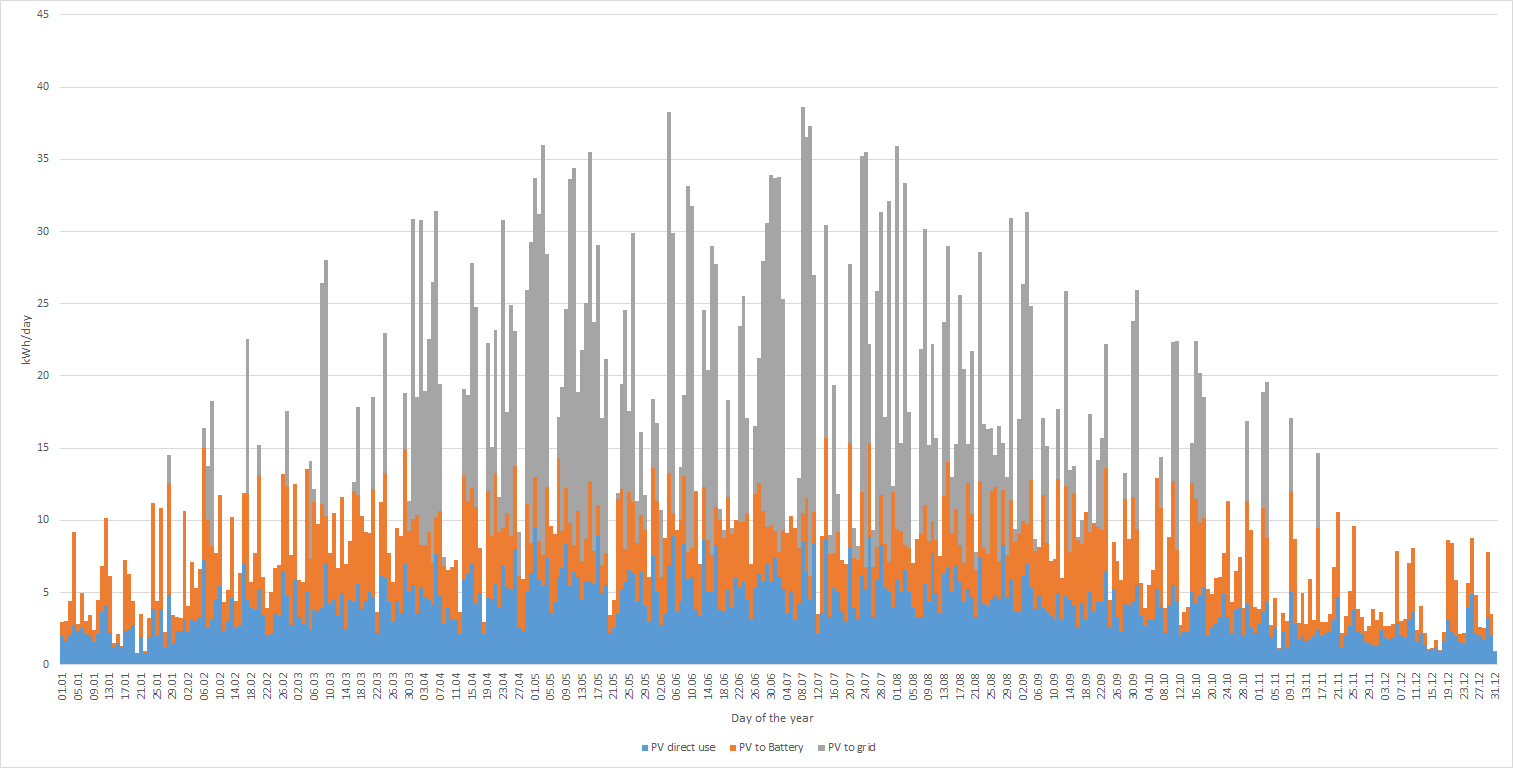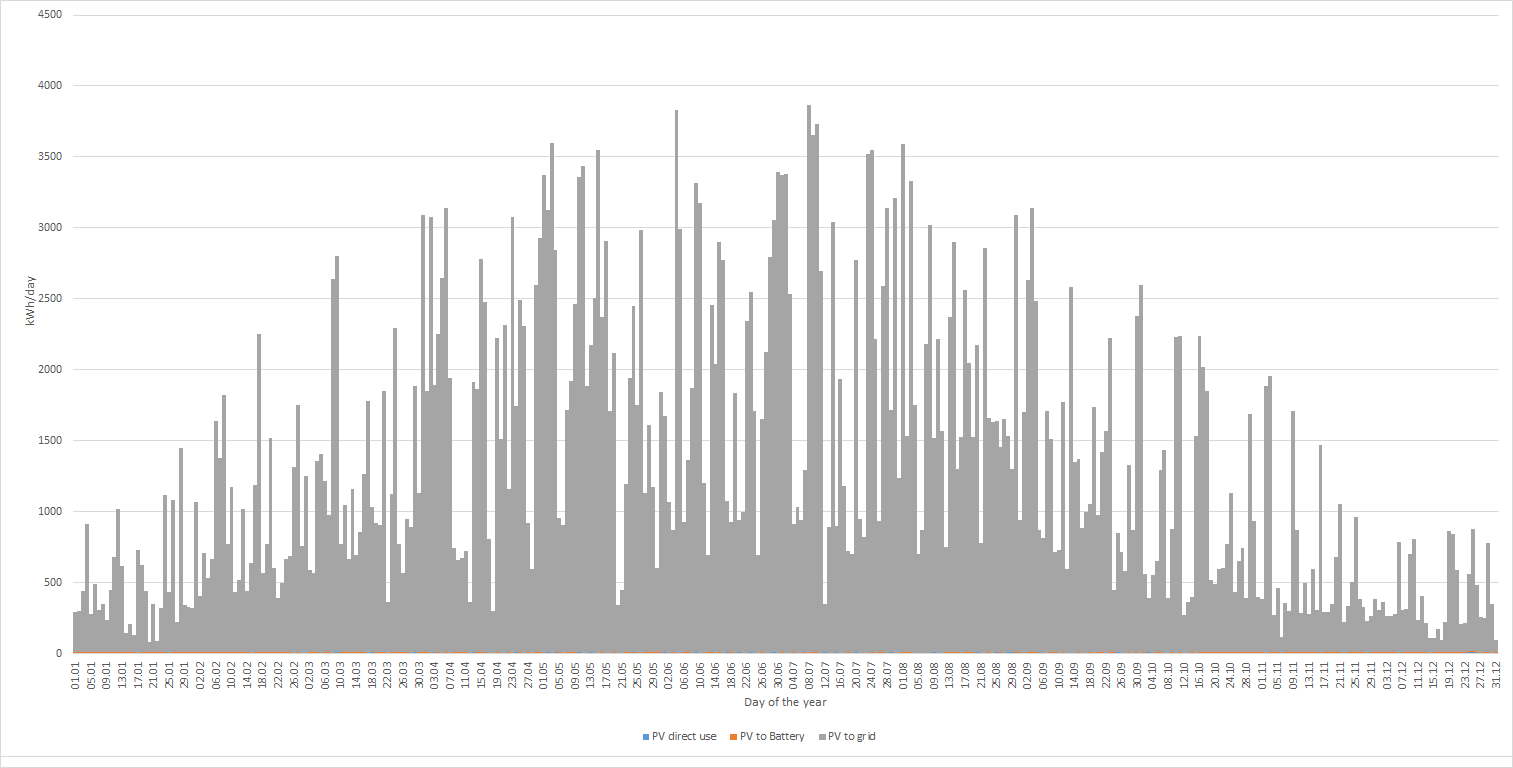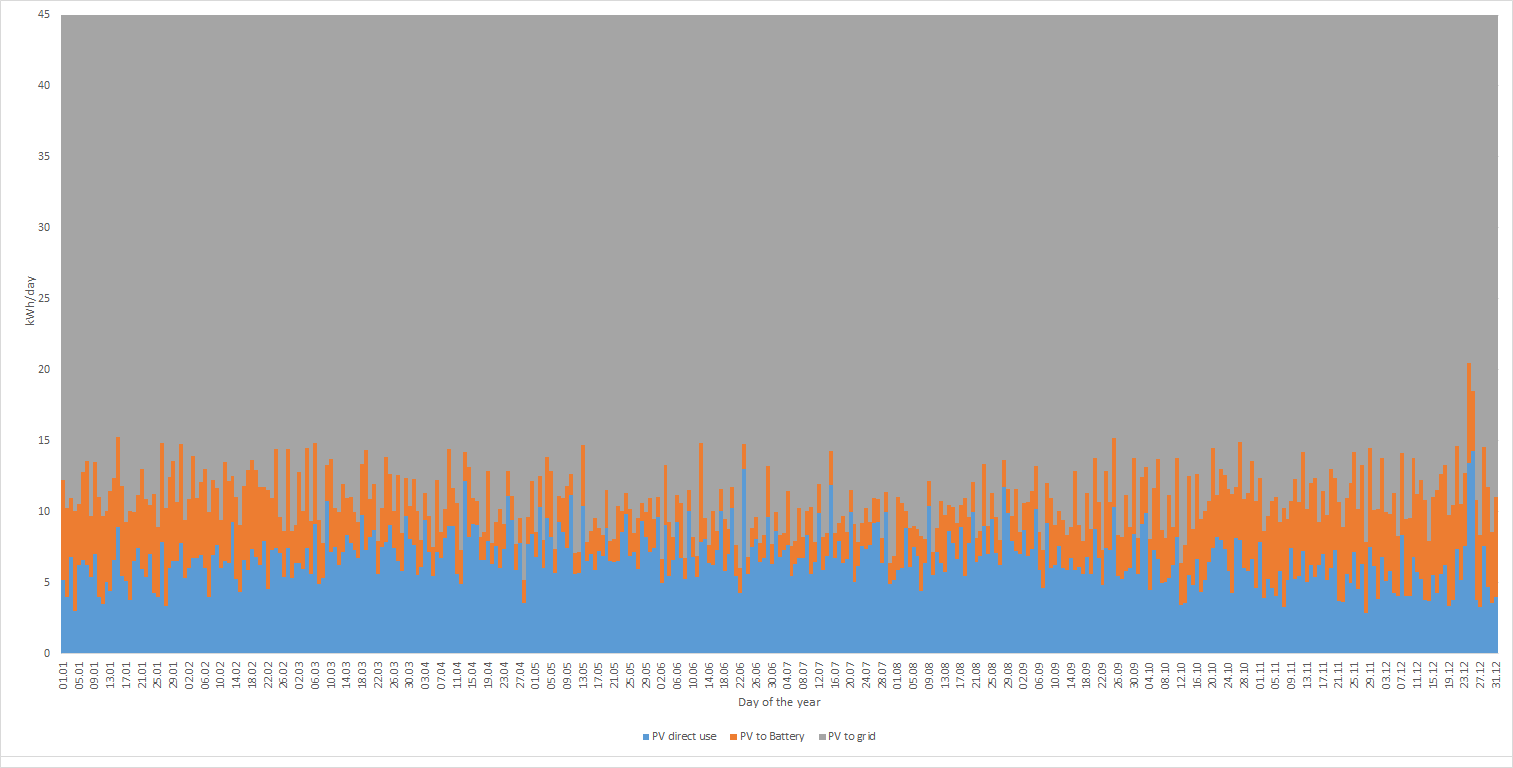2015-05-21
In the last post there was no data about the energy delivered by the PV field and how it is split between battery, direct use and grid. Fortunately this is an omission that is rather easily remedied.
The charts below show how energy is distributed over the year.
The small difference in the battery consumption is the result of a slight variation in the consumption due to the random number generator in the LPG.
The 5 kW field equals, depending on the efficiency of the modules, about 30-50 m². This is already about the size you could put on the south side roof of a normal residential building. If there was a net metering scheme available then this would be more than sufficient to offset the total energy consumption of the household.
The 500 kW field is so massive that in the first chart the direct use isn’t even visible. So I made a second chart with the same axis as the first chart. I think it’s pretty clear that the problem here is not the size of the PV field, but the distribution of the solar energy over the year and the energy consumption at night. Some more numbers:
To arbitrage 7 kWh per day you would need a total energy consumption per year of:
- If you only consume energy at night: 2555 kWh
- If you consume the same amount during the day and the night: 5110 kWh
- And if you consume twice as much during the day as during the night: 7665 kWh
Another possible use case is having a large UPS for the entire household to help with grid brownouts and blackouts.
The thing to realize about this is that different country have different grid reliabilities. The reason for this from an economic perspective is that as a society there are multiple equilibria for grid reliability. You can either have very low reliability and then people who need reliable electricity have to invest a lot themselves to buy a UPS, diesel generators etc. Obviously building a low reliability grid is much less costly. You just hang your power lines outside on poles, don’t plan with massive redundancy and overall save a lot on maintenance. This lowers the price of the electricity considerably. But since every factory is forced to invest in a solution to increase reliability and there are massive economic damages due to power outages, the total cost to society is a lot higher than it seems and it’s not so clear if it’s really cheaper if you do a total cost analysis.
Alternatively as society you can decide that there should be a very high reliability and design appropriately. That means putting power lines underground, having appropriate safety factors, going with a n+1 or 2n design, doing preventive maintenance and all these things. This increases the grid cost considerably, but saves a lot of damages from outages and makes it much cheaper to set up a factory, so it’s not clear if this isn’t actually cheaper as a society than a low reliability grid.
The American grid seems to be a lot closer to the first choice, while the German grid is more close to the second choice. The last electricity blackout I can personally remember is a years ago for half an hour and the statistics say that the average yearly blackout time across all consumers is in the order of a few minutes, counting all scheduled maintenance.
My point here is that the UPS use case in Germany isn’t looking good either. Interestingly enough the reason for this the high electricity price, a lot of which is paid for having a highly reliable grid.



